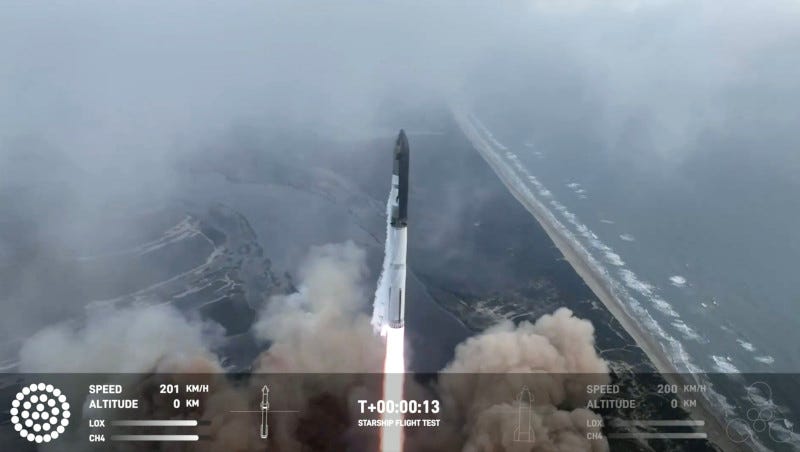Third Time's a Charm for Starship
Massive Rocket Reaches Orbital Altitude
After two RUDs on Starship launches, SpaceX achieved orbital altitude with the massive rocket on the third attempt this morning.
Starship lifted off from Starbase in Boca Chica at 9:25 am ET and completed nearly all of its flight test objectives. The second stage separated from the booster at 2:50 into the flight. According to SpaceX telemetry on its vid…




